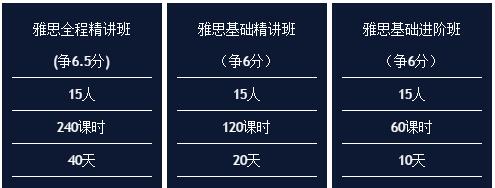剑桥雅思4Test1passage3阅读原文+译文+题目
2017/3/30 14:59:46来源:新航道作者:新航道
摘要:剑桥雅思系列是同学们在备考中最好的教材之一,所以同学们在备考的时候是要准备一些这方面的资料的。新航道雅思小编今日分享剑桥雅思4Test1passage3阅读原文+译文+题目,希望烤鸭们的备考雅思提供帮助。
剑桥雅思系列是同学们在备考中最好的教材之一,所以同学们在备考的时候是要准备一些这方面的资料的。新航道雅思小编今日分享剑桥雅思4Test1passage3阅读原文+译文+题目,希望烤鸭们的备考雅思提供帮助。
剑桥雅思4Test1passage3阅读原文+译文+题目
Visual Symbols and the Blind
盲人与视觉符号
Part 1
From a number of recent studies, it has become clear that blind people can appreciate the use of outlines and perspectives to describe the arrangement of objects and other surfaces in space. But pictures are more than literal representations. This fact was drawn to my attention dramatically when a blind woman in one of my investigations decided on her own initiative to draw a wheel as it was spinning. To show this motion, she traced a curve inside the circle (Fig. 1). I was taken aback. Lines of motion, such as the one she used, are a very recent invention in the history of illustration. Indeed, as art scholar David Kunzle notes, Wilhelm Busch, a trend-setting nineteenth-century cartoonist, used virtually no motion lines in his popular figures until about 1877.
第一部分
最近的几次研究表明,盲人可以理解用轮廓线和透视法来描述物体排列及空间平面的方法。但是,图画不只是表面意思的体现。在研究中,一名盲人女性自发地画出了一个转动的车轮,这就引起了我对上述事实的极大关注。为了展示这样一个动作,她在圆圈中画了一条曲线(见图1)。我大吃一惊。像她所使用的这种运动线是插图史上最近的发明。实际上,正如艺术学者David Kunzle指出的那样,Wilhelm Busch,一名引领潮流的19世纪卡通画家,直到1877年才开始在其最流行的人物身上使用运动线。
When I asked several other blind study subjects to draw a spinning wheel, one particularly clever rendition appeared repeatedly: several subjects showed the wheel’s spokes as curved lines. When asked about these curves, they all described them as metaphorical ways of suggesting motion. Majority rule would argue that this device somehow indicated motion very well. But was it a better indicator than, say, broken or wavy lines — or any other kind of line, for that matter The answer was not clear. So I decided to test whether various lines of motion were apt ways of showing movement or if they were merely idiosyncratic marks. Moreover, I wanted to discover whether there were differences in how the blind and the sighted interpreted lines of motion.
当我要其他接受研究的盲人对象画出转动中的车轮时,一种特别聪明的画法反复出现了:几个人把车条画成了曲线。当被问到为什么要用曲线的时候,他们都说这是喑示运动的一种带有隐喻意味的方法。多数原则会认为从某种角度来讲,这个图案充分地表示了运动。但是就此而言,曲线是不是比,比如说虛线,波浪线或者其他任何一种线条,更能说明问题呢?答案是不确定的。所以我决定测试一下,不同的运动线是否就是表现运动的恰当方式,而或它们只是一些特殊的符号而已。进一步而言,我还想找出盲人和普通人在诠释运动线时的不同之处。
To search out these answers, I created raised-line drawings of five different wheels, depicting spokes with lines that curved, bent, waved, dashed and extended beyond the perimeter of the wheel. I then asked eighteen blind volunteers to feel the wheels and assign one of the following motions to each wheel: wobbling, spinning fast, spinning steadily, jerking or braking. My control group consisted of eighteen sighted undergraduates from the University of Toronto.
为了找出答案,我用凸起线条做出了五幅有关轮子的画,车条被画成大曲线,小曲线,波浪线,虚线以及超出车轮的直线。然后,我让18名盲人志愿者抚摩这些轮子,并且将它们分别与下列运动中的一个搭配:不稳定地转动,飞速转动,稳定地转动,颠簸和刹车。参照组则是由来自于多伦多大学的18名普通大学生组成的。
All but one of the blind subjects assigned distinctive motions to each wheel. Most guessed that the curved spokes indicated that the wheel was spinning steadily; the wavy spokes, they thought, suggested that the wheel was wobbling; and the bent spokes were taken as a sign that the wheel was jerking. Subjects assumed that spokes extending beyond the wheel’s perimeter signified that the wheel had its brakes on and that dashed spokes indicated the wheel was spinning quickly.
除了一个人,其他所有的盲人都将具体的动作与车轮搭配了起来。大多数人猜测被画成大曲线的车条表示车轮正在稳定地转动;而他们认为波浪线车条表示车轮在不稳定地转动,小曲线则被认为是车轮正在颠簸的象征。受试者推测,超出车轮边缘的车条代表车轮正处在刹车状态,而虚线车条则说明车轮正在飞快地旋转。
In addition, the favoured description for the sighted was the favoured description for the blind in every instance. What is more, the consensus among the sighted was barely higher than that among the blind. Because motion devices are unfamiliar to the blind, the task I gave them involved some problem solving. Evidently, however, the blind not only figured out meanings for each line of motion, but as a group they generally came up with the same meaning at least as frequently as did sighted subjects.
另外,在毎种情况下,普通人喜爱的表达与盲人喜爱的基本一致。更有甚者,盲人之间的共识几乎与普通人的一样高。因为盲人不熟悉运动装置,因此这个任务对他们而言相当困难。然而,很明显,盲人不仅能够搞清楚每种运动线所代表的意义,而且作为一个团队,他们达成共识的频率也不比普通人低。
Part 2
We have found that the blind understand other kinds of visual metaphors as well. One blind woman drew a picture of a child inside a heart — choosing that symbol, she said, to show that love surrounded the child. With Chang Hong Liu, a doctoral student from China, I have begun exploring how well blind people understand the symbolism behind shapes such as hearts that do not directly represent their meaning.
第二部分
我们还发现盲人同样可以理解其他的视觉隐喻。有个盲人女性在心形中画了个小孩儿——她说选择心形是为了表示这个孩子周围充满了爱。于是,我和刘长虹,一名来自中国的博士生,开始探索盲人对如心形这样含义不直白的图形的象征意义,到底理解到了何种程度。
We gave a list of twenty pairs of words to sighted subjects and asked them to pick from each pair the term that best related to a circle and the term that best related to a square. For example, we asked: What goes with soft A circle or a square Which shape goes with hard
我们给普通受试者一张有二十对词的单子,并且要求他们从每一对词当中挑一个最能代表圆形的词以及一个最能代表方形的词。举个例子,我们会问:“哪个形状和柔软有关?圆形还是方形?哪个形状表示坚硬?”
All our subjects deemed the circle soft and the square hard. A full 94% ascribed happy to the circle, instead of sad. But other pairs revealed less agreement: 79% matched fast to slow and weak to strong, respectively. And only 51% linked deep to circle and shallow to square. (See Fig. 2.) When we tested four totally blind volunteers using the same list, we found that their choices closely resembled those made by the sighted subjects. One man, who had been blind since birth, scored extremely well. He made only one match differing from the consensus, assigning ‘far’ to square and ‘near’ to circle. In fact, only a small majority of sighted subjects — 53% — had paired far and near to the opposite partners. Thus, we concluded that the blind interpret abstract shapes as sighted people do.
所有的受试者都认为圆形代表柔软,方形代表坚硬。高达94%的人将快乐归给了圆形,而没有选悲伤。但是在其他词组上,不同意见就出现了:79%的人分别认为圆是快的而方是慢的,圆是弱的而方是强的。只有51%的人将深与圆形相连,将浅与方形相连(见图2)。当我们用同样的单子去测试四个完全失明的人时,他们的选择几乎与普通受试者的一模一样。有个先天失明的人做得极好。他的选择只有一个与众不同,那就是把“远”与方形联系起来而把“近”同圆形联系起来。实际上,也只有刚刚过半53%的普通受试者认为圆形代表远,而方形代表近。因此,我们可以得出结论,盲人同普通人一样能够理解抽象的图形。
剑桥雅思4Test1passage3阅读题目
Questions 27-29
Choose the correct letter, A, B, C or D.
Write your answers in boxes 27-29 on your answer sheet.
27 In the first paragraph the writer makes the point that blind people.
A may be interested in studying art.
B can draw outlines of different objects and surfaces.
C can recognise conventions such as perspective.
D can draw accurately.
28 The writer was surprised because the blind woman
A drew a circle on her own initiative.
B did not understand what a wheel looked like.
C included a symbol representing movement.
D was the first person to use lines of motion.
29 From the experiment described in Part 1, the writer found that the blind subjects
A had good understanding of symbols representing movement.
B could control the movement of wheels very accurately.
C worked together well as a group in solving problems.
D got better results than the sighted undergraduates.
Questions 30-32
Look at the following diagrams (Questions 30-32), and the list of types of movement below. Match each diagram to the type of movement A-E generally assigned to it the experiment. Choose the correct letter A-E and write them in boxes 30-32 on your answer sheet.
A steady spinning
B jerky movement
C rapid spinning
D wobbling movement
E use of brakes
Questions 33-39
Complete the summary below using words from the box.
Write your answers in boxes 33-39 on your answer sheet.
NB You may use any word more than once.
In the experiment described in Part 2, a set of word 33…… was used to investigate whether blind and sighted people perceived the symbolism in abstract 34…… in the same way. Subjects were asked which word fitted best with a circle and which with a square. From the 35… volunteers, everyone thought a circle fitted ‘soft’ while a square fitted ‘hard’.
However, only 51% of the 36…… volunteers assigned a circle to 37…… . When the test was later repeated with 38…… volunteers, it was found that they made 39…… choices.
associations blind deep hard
hundred identical pairs shapes
sighted similar shallow soft
words
Question 40
Choose the correct letter, A, B, C, or D.
Write your answer in box 40 on your answer sheet.
Which of the following statements best summarises the writer’s general conclusion
A The blind represent some aspects of reality differently from sighted people.
B The blind comprehend visual metaphors in similar ways to sighted people.
C The blind may create unusual and effective symbols to represent reality.
D The blind may be successful artists if given the right training.
更多雅思培训的相关信息,请关注上海新航道雅思频道 。
如需下载雅思相关资料请与上海新航道雅思页面 的“在线客服”联系。
或在下方注册表格内,请提交“姓名+电话+邮箱”,我们将于24小时内发送给你!

免费获取资料
热报课程
- 雅思课程
| 班级名称 | 班号 | 开课时间 | 人数 | 学费 | 报名 |
|---|
免责声明
1、如转载本网原创文章,情表明出处
2、本网转载媒体稿件旨在传播更多有益信息,并不代表同意该观点,本网不承担稿件侵权行为的连带责任;
3、如本网转载稿、资料分享涉及版权等问题,请作者见稿后速与新航道联系(电话:021-64380066),我们会第一时间删除。
全真模拟测试
制作:每每









